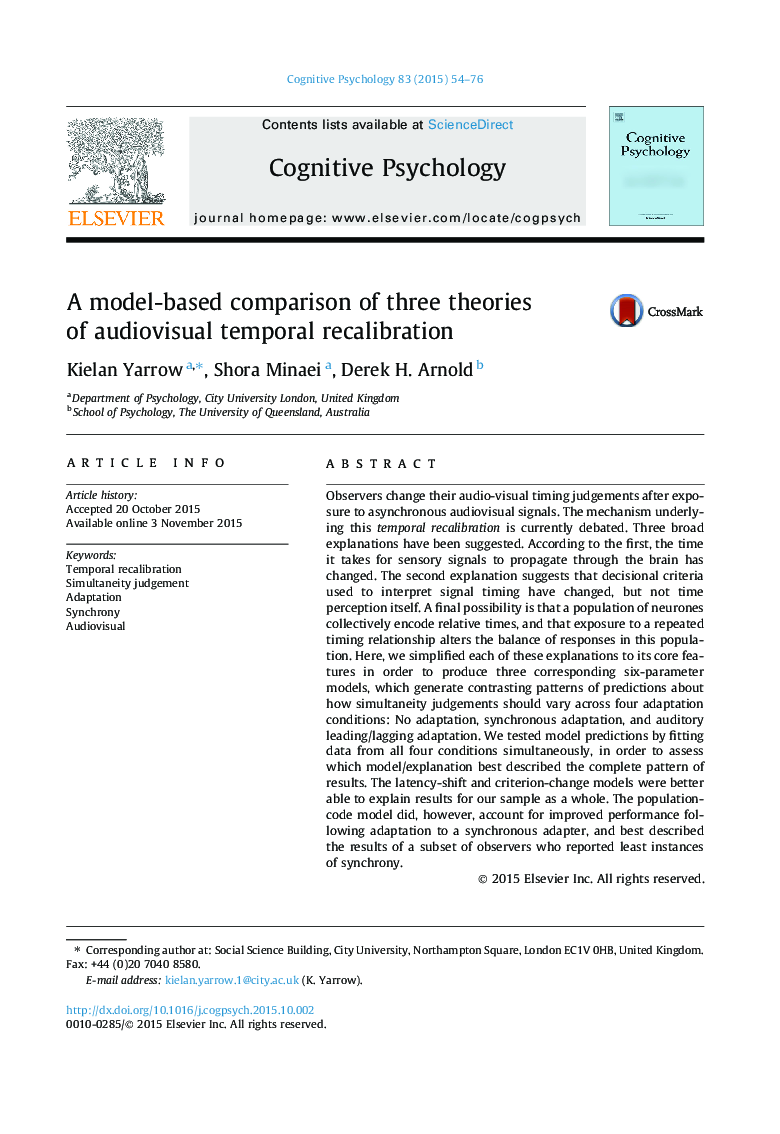| Article ID | Journal | Published Year | Pages | File Type |
|---|---|---|---|---|
| 916832 | Cognitive Psychology | 2015 | 23 Pages |
•Our perception of the timing between events changes following adaptation.•Three conflicting accounts of temporal recalibration were formalised via computational modelling.•Latency-shift and criterion-change models fitted the data better than a population-code model.•However, some blending of these concepts is probably required to fully describe temporal recalibration effects.
Observers change their audio-visual timing judgements after exposure to asynchronous audiovisual signals. The mechanism underlying this temporal recalibration is currently debated. Three broad explanations have been suggested. According to the first, the time it takes for sensory signals to propagate through the brain has changed. The second explanation suggests that decisional criteria used to interpret signal timing have changed, but not time perception itself. A final possibility is that a population of neurones collectively encode relative times, and that exposure to a repeated timing relationship alters the balance of responses in this population. Here, we simplified each of these explanations to its core features in order to produce three corresponding six-parameter models, which generate contrasting patterns of predictions about how simultaneity judgements should vary across four adaptation conditions: No adaptation, synchronous adaptation, and auditory leading/lagging adaptation. We tested model predictions by fitting data from all four conditions simultaneously, in order to assess which model/explanation best described the complete pattern of results. The latency-shift and criterion-change models were better able to explain results for our sample as a whole. The population-code model did, however, account for improved performance following adaptation to a synchronous adapter, and best described the results of a subset of observers who reported least instances of synchrony.
